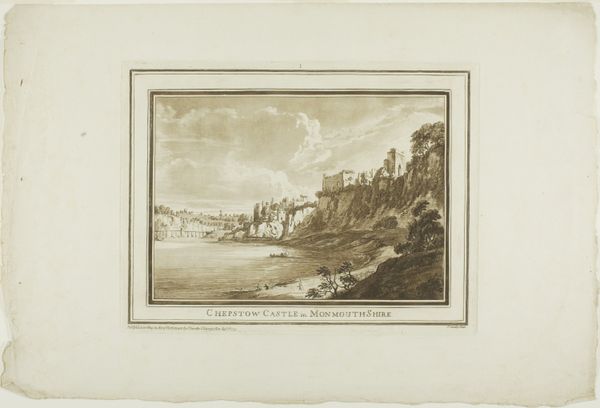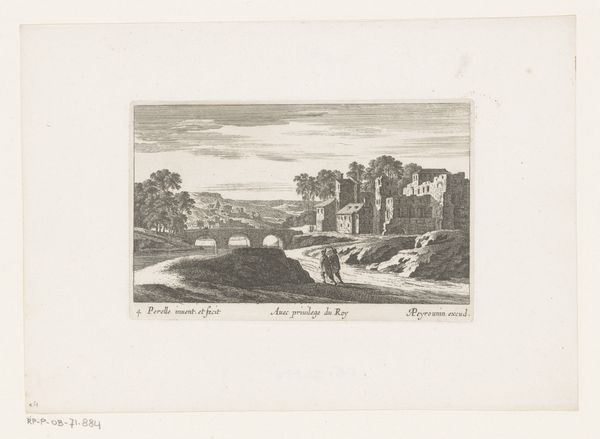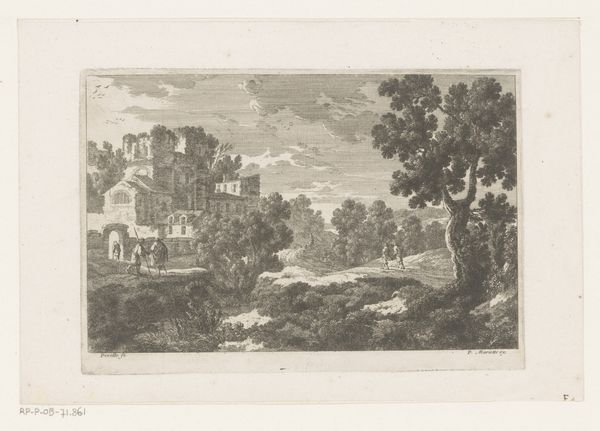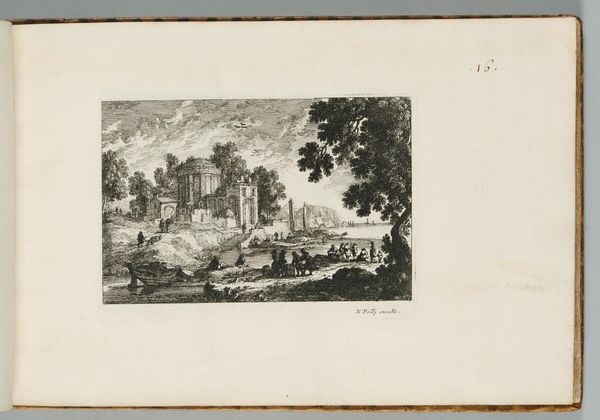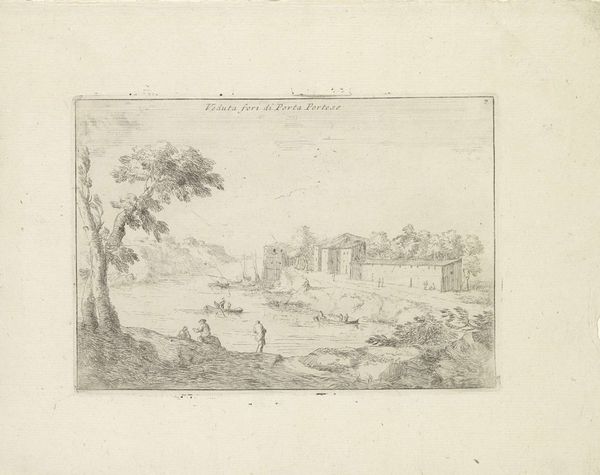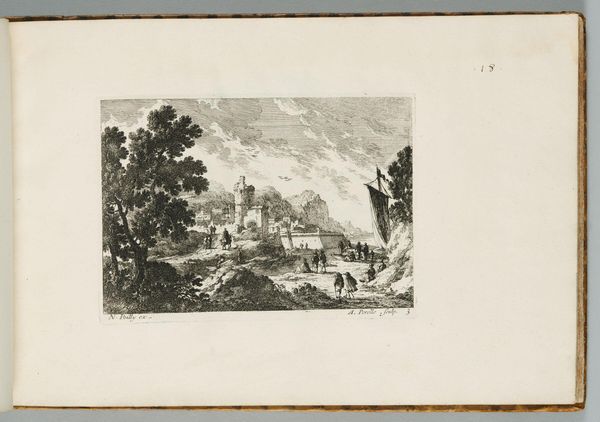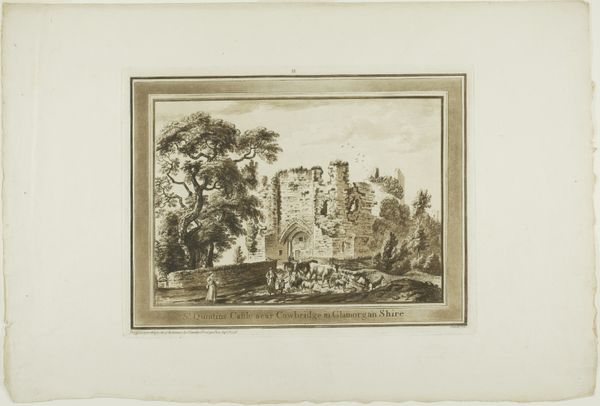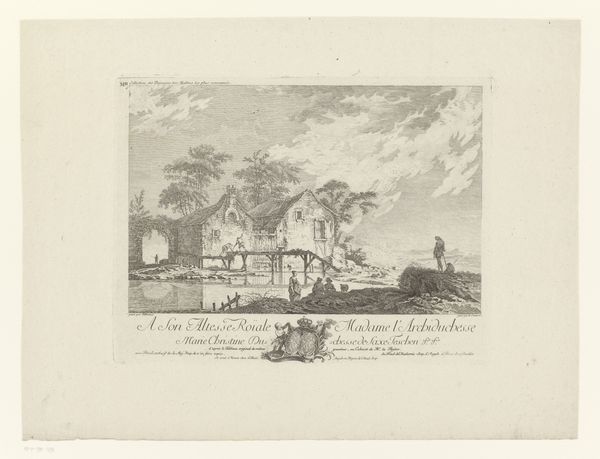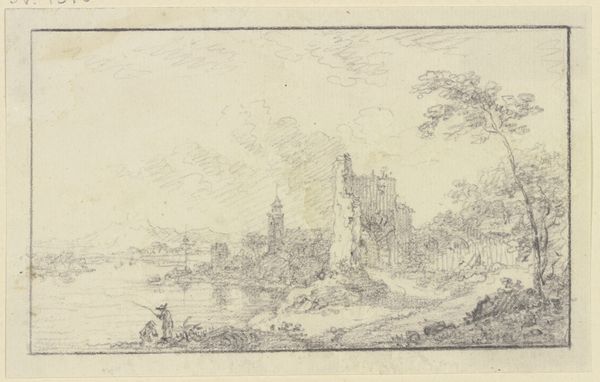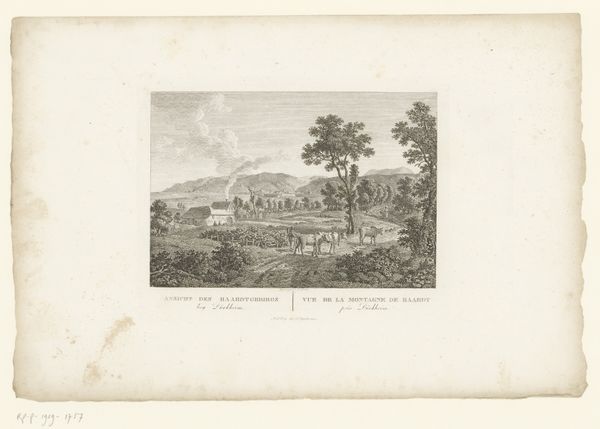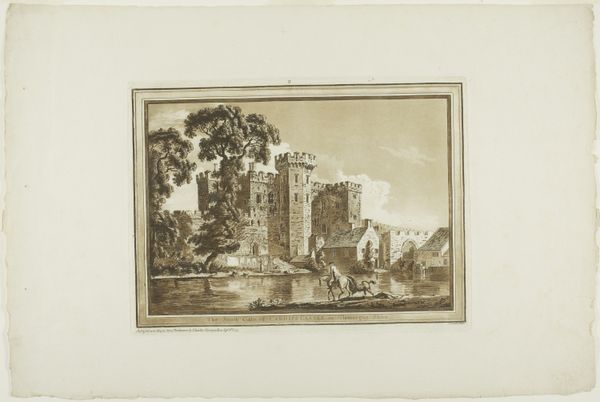
Pembroke Castle, from Twelve Views in Aquatinta from Drawings taken on the Spot in South Wales 1773 - 1775
0:00
0:00
Dimensions: 186 × 260 mm (image); 239 × 314 mm (plate); 353 × 525 mm (sheet)
Copyright: Public Domain
Curator: Standing before us is "Pembroke Castle, from Twelve Views in Aquatinta from Drawings taken on the Spot in South Wales," created by Paul Sandby between 1773 and 1775. It's a masterful print combining etching and aquatint techniques on paper. Editor: It's a serene scene. The tonal gradations created by the aquatint give a softness to the stonework of the castle, really emphasizing its texture. There's a captivating balance between the built environment and the natural world, isn't there? Curator: Absolutely. Sandby was clearly interested in exploring the interplay of light and shadow across the architectural forms. The careful composition, framing the castle against the sky, underscores its dominance within the landscape. The artist manipulates tones to achieve aerial perspective, simulating depth that carries the viewer’s gaze to the horizon. Editor: I am wondering about the materials he used, actually. Creating such fine tonal shifts would demand meticulous work. How much of the texture arises from the aquatint process itself versus careful layering, or the specific acid he used? Did Sandby have assistants? These practical elements reveal the human effort to depict sublime ideas, grounding Romanticism. Curator: The meticulous work is evident. But if you step back, observe how Sandby utilizes line to establish forms, contrasting with the tonal washes that shape the castle and rocks beneath it. It reveals a complex formal approach. How does the work make you feel? Editor: The mood is tranquil but the presence of ruins evokes deeper themes like the impermanence of human achievements. This aquatint print suggests the labor invested, both materially and conceptually. Did Sandby view Pembroke Castle’s transformation as industrial opportunity? What did castle inhabitants feel viewing and consuming art? Curator: Interesting points. While Sandby highlights material specifics, Pembroke Castle invites a meditation on enduring architectural power. Editor: Indeed, the artistic labor involved allows its symbolic meaning of this monumental architecture, making tangible a slice of history. I value contemplating not just how it looks, but how it was made and received. Curator: Reflecting upon Pembroke Castle I can see Sandby’s skilled hand renders texture. Editor: Thinking about how it came into being is useful. The artist and craftspeople deserve some recognition.
Comments
No comments
Be the first to comment and join the conversation on the ultimate creative platform.
